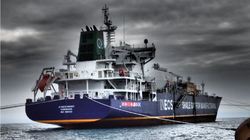Asia to dominate energy demand by 2040, forecasts IEA

Forecasts from the International Energy Agency conclude that the dominant players in the sector, especially the United States and China, will need to find ways to work together in spite of trade disputes. Meanwhile, the transformation of the electricity sector will drive economic growth and enable emission reduction strategies, especially in developing economies. 13 Nov 2018
Geopolitics will play an increasing role in the energy business in the period to 2040, as US production and Asian demand rise in prominence, according to the latest analysis from the International Energy Agency
WITH more than 70% of future global energy investments expected to be government-driven, it means politicians will have to draft the right policies and incentives to clean up energy supplies.
“The links between energy and geopolitics are strengthening; this is a major factor in the outlook for energy security,” according to Fatih Birol, executive director of the International Energy Agency.
Speaking at the launch of the IEA’s World Energy Outlook, Dr Birol said that more than 70% of the $42trn in investment forecast as part of the agency’s New Policies Scenario “is either conducted by state-directed entities or responds to a full or partial revenue guarantee put in place by governments”.
Little more than one-quarter of investment comes from private enterprises responding to prices set on competitive markets.
Energy market trends over the past 20 years and out towards 2040 reveal a profound shift in energy consumption to Asia, which is felt across all fuels and technologies, as well as in energy investment. Asia makes up half the growth in natural gas, 80% of the increase in oil, more than 100% of the growth in coal and nuclear.
In 2000, European companies dominated the list of top power producers, measured by installed capacity; now six of the top 10 are Chinese.
Meanwhile, the shale revolution has enabled the US to pull away from the rest of the field as the world’s largest oil and gas producer. IEA forecasts suggest that by 2025 nearly one in five barrels of oil and one in four cubic metres of gas will comes from the US.
This is creating an increasingly complex network of trade flows because Asia’s share of the oil and gas trade rises from about half today to more than two-thirds in 2040.
Among other observations made in the World Energy Outlook is the dramatic transformation of the electricity sector, especially in developing economies, where a doubling of demand puts cleaner, universally available and affordable electricity at the centre of strategies for economic development and emissions reduction.
Shipping will need to reflect on the forecast that natural gas will overtake coal in 2030 to become the second-largest fuel in the global energy mix. Trade in LNG is expected to double in response to rising demand from developing economies, led by China.
“By 2040, LNG will become the predominant way of moving gas, over pipelines,” Dr Birol said, underlining China’s strategic choice of this fuel as a way to reduce air emissions at a time of rapid urbanisation.
India also rises in significance as global energy demand changes. In 2017, China overtook the US as the biggest source of demand. China is predicted to dominate demand by 2040.
However, it is the increasing demand from India that looks likely to create a major market in the 2030s. India is pushing strongly to expand the role of renewables in the energy mix, but robust growth in electricity demand still means a near-doubling in coal-fired power output to 2040.
In conclusion, the IEA warns that the greatest risk of an energy supply crunch comes in the oil sector, where the average level of new conventional crude oil project approvals over 2015-2018 is only half the amount necessary to balance the market out to 2025. US shale oil will not be enough on its own.
“The US would need to add another Russia [in terms of oil production] by 2025 if this gap is to be filled,” Dr Birol said. By contrast, the risk of an abrupt tightening in LNG markets in the mid-2020s has been eased by major new project announcements, notably in Qatar and Canada.
In answer to a question about sanctions on Russia and Iran and trade disputes between the US and China, Dr Birol commented: “Trade disputes are here today and will be here tomorrow, but LNG exporters and importers will find a way to do business.”